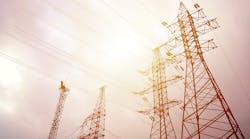After closing the books on 2020, we're all keenly aware that the new year will once again bring both opportunities and challenges. While one can never predict what exactly will happen, as we learned from the coronavirus crisis, adopting an "always-ready" stance when it comes to new solutions and technologies can help turn challenges into opportunities and opportunities into wins.
Developing this always-ready stance should include both a look back — what you experienced and learned — and a look ahead — observing trend momentum to make informed predictions — so you are prepared to meet challenges and capitalize on opportunities. I recently shared the biggest utility trends in 2020, and here I'll talk about predictions in utility asset management and geospatial data for the upcoming year.
Many of the 2020 trends will continue to gain momentum in 2021, but I expect to see some new capabilities take flight as well. Here’s a look at predictions on what this year will look like for the utility industry.
Automation will take flight
Drones are already an improvement over manual and helicopter-based inspection processes. Once they're fully automated, the benefits will stack up even more.
The challenge
Drone-based inspections still require a team of pilots in the field. And in times of COVID-19, the fewer people in the field, the better.
The opportunity
The geospatial data industry is working toward completely autonomous flight. This sounds like it should be pretty simple because we already have so much automation technology, but autonomous flight requires much more than that.
"Right now, according to the rules and regulations of the Federal Aviation Administration (FAA), even if the drone is automated, you have to be able to take control of it and keep it within the visual line of sight," said Dave Culler, senior VP of sales and marketing at PrecisionHawk. "That way, if you can see an aircraft or something else in the flight path, you can take control and move the drone away from it."
As the technology advances — and as the FAA figures out how they want to integrate drones into the National Airspace — a drone will be able to fly out of its box, collect data down a distribution line for hundreds of miles, and then return and land in its box.
Satellite data will add to the overload
2020 was the year of data overload — but it's got nothing on what 2021 will bring.
The challenge
Satellite data is steadily increasing as we find more use cases for it, and new technology tools make it easier to collect and use this data. In fact, analysts at Technavio predicted in 2017 that the global commercial satellite imaging market would grow by more than 11% through 2021.
The challenge? As we saw in 2020, there will so much data that it will be difficult to separate the noise from the signal and the important from the trivial.
The opportunity
Artificial intelligence (AI) and machine learning (ML) technologies will continue to advance, enabling utilities to keep up with the explosion of data so they can organize and analyze as much relevant data as they can collect from satellites and other sources.
AI and ML will be pushed to the edge
The challenge
The faster your workflow is, the sooner you can get and use the right information to make critical repairs, prioritize maintenance tasks, and improve your network uptime. However, even the fastest technology we have today isn't as fast as it could be.
The opportunity
New chips and ML techniques will allow ML models to be trained at the edge instead of in the data center, says Forrester in its report Predictions 2021: Accelerating Out Of The Crisis. The research firm reports, "Edge application intelligence will blossom in 2021 to accelerate digital transformation, especially in industries that must bridge the physical and digital worlds in real time."
Edge AI will allow for faster reporting and accelerated automated workflows. If you put a drone up and it sees something that someone needs to know right now — not in five minutes, not in an hour, but the moment it sees it — it replicates the human being picking up a phone and calling it in. That's going to be where the advancement is — reducing the time-to-value for super-critical issues and pushing as much important AI onto the edge as possible.
The next step
How can your utility take advantage of these trends and predictions in data collection and GIS technology?
Utilities need to ensure that they have a data value chain — that they understand their data workflow from collection to action. This makes it more likely that the right data will get into the right hands to create the value you need.
You collect, analyze, report on, and take action on your inspection data. What do each of these steps look like for your utility and what do you want them to look like? And what technical triggers across that value chain do you need to pull to ensure that your data is getting where it needs to be in the time it needs to get there?
By understanding and analyzing each step of your workflow, you'll be able to derive more benefit from AI, ML, automation, drone data, and all of the other trends discussed above to make the most of whatever 2021 throws your way.


